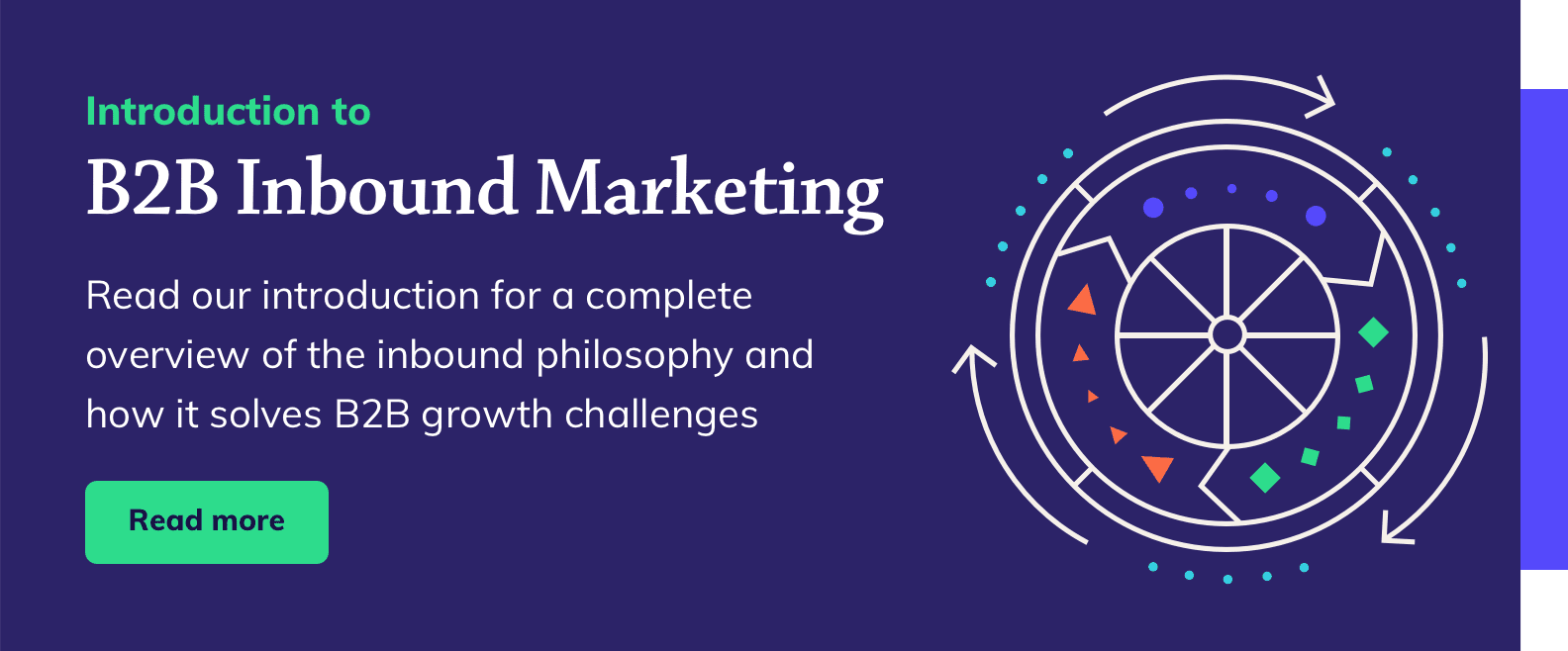B2B inbound marketing is the alignment of your digital marketing efforts to the way buyers want to purchase products and services in the digital age. Search has enabled customers to regain control of the buying process, making them less receptive to intrusive outbound tactics, like cold calling and bulk emailing.
From a business perspective, inbound marketing is about ensuring you’re easy to find online. That people can solve their problems, engage with your brand, and act on their interest to become customers without the need for invasive or disruptive tactics.
Aligning your digital marketing efforts with the buyer
When someone heads online looking for a solution to a specific business problem, they want the solution that’s right for them – not the one with the most ads. They also want to know they can trust your business before they decide to initiate a conversation or hand over their personal information.
Inbound marketing is, in many respects, permission-based marketing. You need explicit consent from prospects before you can communicate with them. This could be by subscribing to your newsletter or blog digest, completing a form to download one of your ebooks, or registering for an upcoming webinar.
This is in sharp contrast to traditional outbound marketing tactics, like cold calling. Rather than providing valuable content that drives relevant customers to your website organically, exponents approach prospective customers unsolicited. There’s no prior contact or engagement, let alone anything that resembles permission.
And this is one of the main differences between B2B inbound marketing and outbound. Outbound pushes your products or services on your audience, inbound pulls them in with useful information and mutually beneficial offers. To put it another way, one takes into consideration the way modern buyers like to buy so you can align your marketing strategy to those preferences, the other doesn’t.
Success depends on coordination and understanding
Inbound marketers use a range of tactics to reach and engage their target audience. Different customers have different preferences in the way they want to engage with a business. Some prefer reading blogs and ebooks, while others may prefer to interact with the company directly on social media. This is influenced by several factors, including the type of company, market, and where they are on the buyer’s journey.
Five of the most important B2B inbound marketing tactics you should include in your strategy are:
- Content marketing
- Search engine optimisation
- Social media marketing
- Email marketing
- Marketing automation
Strategy is the operative word here. Many companies treat each tactic as a separate activity. Content marketing exists in one silo, SEO in another, and social media marketing in a third. But to align your B2B inbound marketing efforts with the buying process, you must understand your ideal customers and how these tactics work together to support them.
Content marketing
Content is the beating heart of B2B inbound marketing. From blogs and ebooks to social media posts, emails, and your core service pages, content helps you reach and develop relationships with prospective customers at every stage of the buyer’s journey.
To align your content with your buyers, you need to know who they are and what matters to them by creating effective buyer personas.
Search Engine Optimisation (SEO)
90% of B2B customers begin their journey with search. No matter how good your content, no one’s going to find it if it’s not optimised for search and discoverable when and where your buyers are looking. This means creating content that addresses challenges or problems your audience can relate to. It’s also about targeting the right keywords to ensure you attract the right traffic.
Social media
Social media isn’t just a B2C channel. Approximately 92% of US marketers in companies with over 100 employees use social media to promote their brand and increase their reach. And while engagement differs from industry to industry, LinkedIn, Facebook, Twitter, Instagram, and other popular platforms can provide a key touchpoint for your customers.
Adobe’s LinkedIn marketing efforts helped them close 42% of their deals in 2018. So, as well as increasing your reach, social media can help you nurture and convert leads.
Email plays a vital role in any B2B inbound marketing strategy. Whether you want to send personalised emails to a subsection of your customer base to promote an upcoming event or set up an automated workflow to deliver thank you messages whenever someone downloads your content; email can provide real value to your customers.
The key is permission. Have they subscribed to your mailing list? Do they expect to hear from you? If not, your messages will probably end up in their deleted items or junk folder.
Automation
Marketing automation isn’t only about making your internal processes more efficient. Automation encompasses many things including audience segmentation and lead nurturing. It helps you coordinate the different tactics that underpin your strategy which, in turn, allows you to better serve your customers.
That’s not to say more automation is necessarily a good thing. It depends on your audience and where they are in the purchasing lifecycle. While some customers are happy to have a chatbot field their questions, others still prefer to email or pick up the phone and contact a member of your team directly.
Inbound marketing is a long-term strategy
Inbound results take time to develop, but that’s okay. Unlike paid advertising, results compound. This means the content you create will continue to provide value to prospects, drive traffic, and generate leads long after your initial investment – as long as it’s relevant and correctly aligned to your buyer’s needs.






